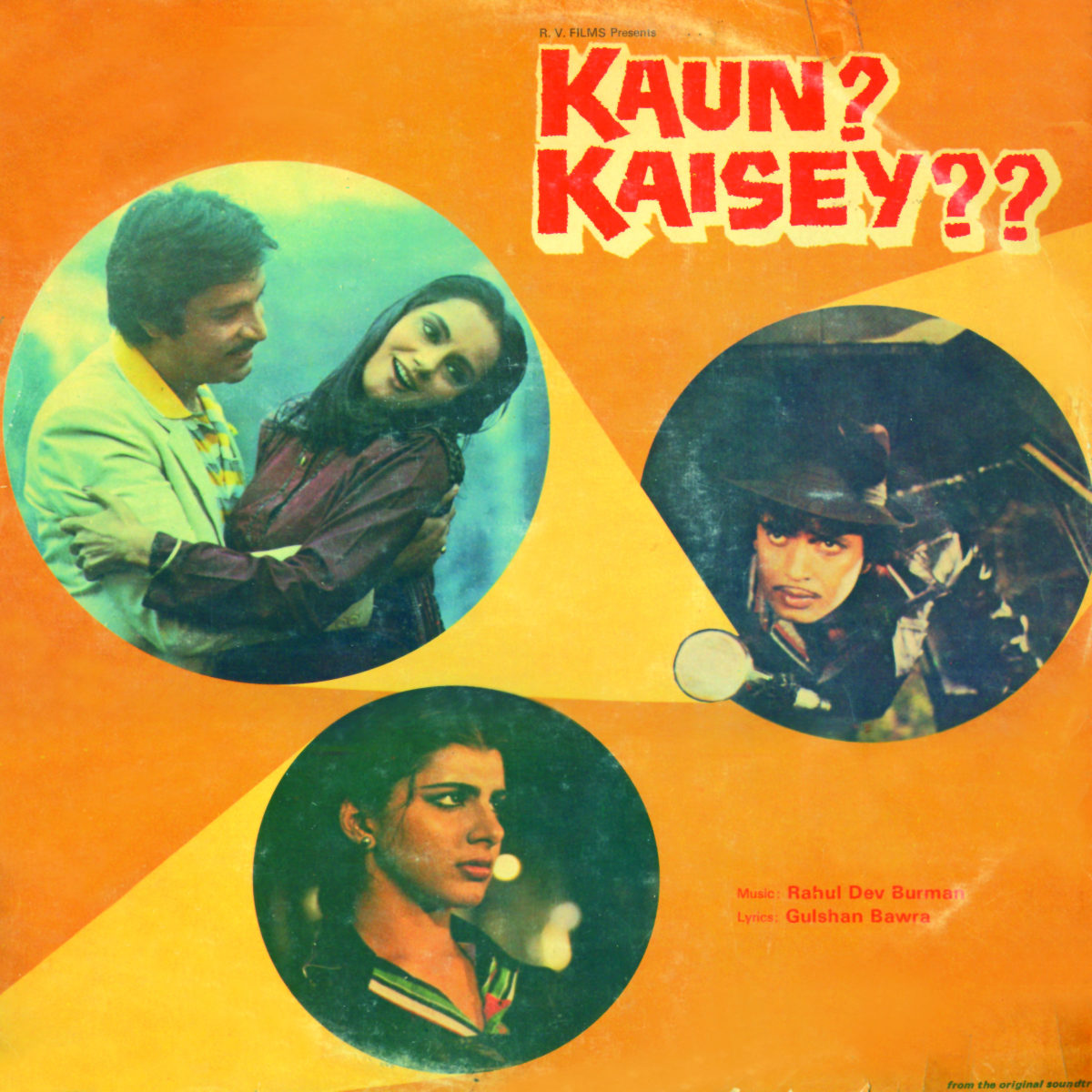Aayega Mere Sapnon Ka Raja …

Song: “Aayega Mere Sapnon Ka Raja”
Film: Kaun? Kaise? (1983)
Producer: Rajni Ganguly, Raj Valia
Director: Anil Ganguly
Lyrics: Gulshan Bawra
Singer: Asha Bhosle
In the prelude, Pancham builds up harmonies around a vocal refrain (pam-param-pam) in three sections, each containing two renditions of this refrain accompanied by a IV-V chord progression. The first section has the bass (in the lower register) and the female chorus (in the higher register) playing in octaves accompanied by arpeggios from an electric guitar with a flanger. Another female chorus line enters in the second section to provide a two-part harmony with the thirds. Asha is heard in the third section adding the final line for a three-part harmony with a two note fifth/third descending part. The last segment continues as electronic percussion and the hi-hat enter. A short phrase on the bass introduces the string section. A short run on the strings, accompanied by a tap on the cymbal, closes the prelude accompanied by a IV-I progression.
In the mukha.Daa, Asha is accompanied the bass, the hi-hat and the tabalaa. Listen carefully near mere sapano.n kaa raaajaa and you can hear the strings. The chorus returns with the vocal refrain melodically echoing Asha’s phrases. A short burst played out on the strings follows before the mukha.Daa with all the trappings established before.
A guitar strum introduces the trumpet/sax that dominates the first interlude. A livelier rhythm is played out by the hi-hat accompanied by strums on the guitar and phrases on the bass. The strings provide responsorial fills and bring this section to a close. The refrain is now played out first in unison and then in thirds on the santoor accompanied by strums on the guitar giving us unison and then two-part harmony. A descending phrase played out on the strings ends this interlude. There’s something about this music that makes you segue into the a.ntaraa of another RDB classic, jaane do naa from Saagar.
The a.ntaraa continues with the same rhythm, but the arrangements backing Asha’s vocals are interesting: with the reliable string harmonies and the bass guitar in the back, Pancham tosses in muted single-note vamps on the electric guitar, off-beat strums on another electric guitar, a faint contribution from the shaker, a touch of the triangle and a couple of percussion instruments (one in the higher register, and the other in the lower). The female chorus backs Asha with the refrain embellished with a little trailing ooh harmony. Things become even peppier near the tail of the a.ntaraa. The rhythm moves to an explicit fast march against which a violin run rises to the fore and things subside as Asha returns to the melody of the mukha.Daa.
A pearly cascade of notes opens the second interlude before a guitar strum introduces an interplay between the string section and the synthesizer (with a tone similar to that heard on Vanraj Bhatia’s theme for Jaane Bhi Do Yaaro) against some fervent bass and drums. A short melody in a tin whistle tone on the synthesizer takes over, accompanied by an interesting pattern on the acoustic guitar and percussion punctuated by bouncy bass riffs. An ascending melody played out by the string section ends the interlude.
Except for the lyrics, the second a.ntaraa and its return to the mukha.Daa mimic the first a.ntaraa.
The melody of the tail of each a.ntaraa is the same as the first line of the mukha.Daa (aayegaa mere sapano.n kaa raajaa ek din) and it’s only with the refrain followed by the next line that Asha truly returns to the mukha.Daa.
The song ends with a lyrical reprise of the original mukha.Daa before a short swirling riff on the strings takes us to the short coda: Asha improvises a la-la-la melody as the female chorus continues with the refrain.
The song is based on a diatonic major scale, but it’s interesting to see Pancham leverage both flavours of the fourth. In using the sharpened fourth (in the violin run during the first interlude and the synthesizer fragments during the second interlude), he seems to move the song to the Lydian mode, and yet dissonance never seems to set in. This melodic adventure and the interesting arrangements take this song from being a ditty of assured hope to a minor gem.
George Thomas
Panchammagic.Org

